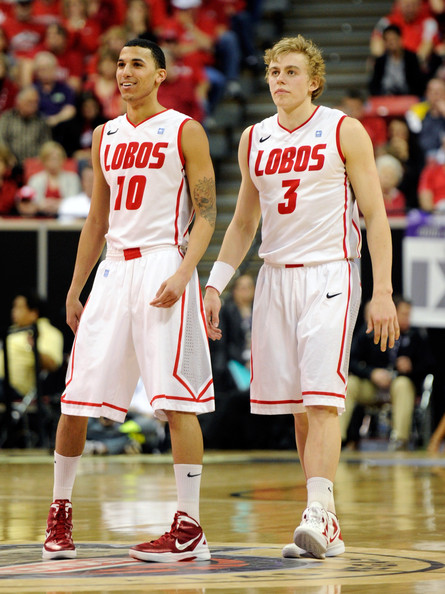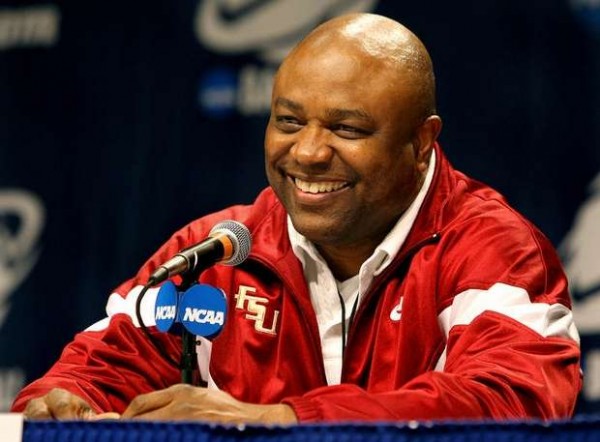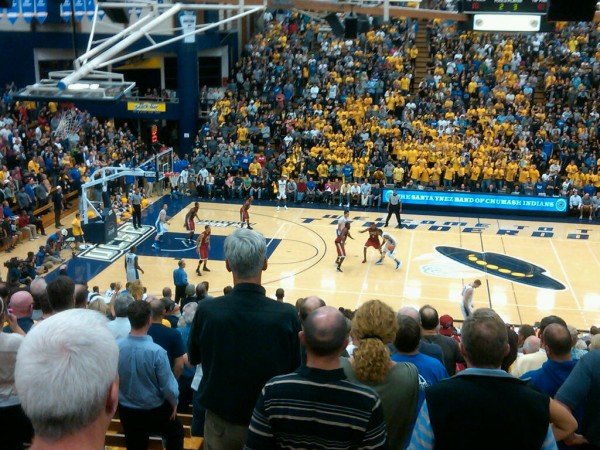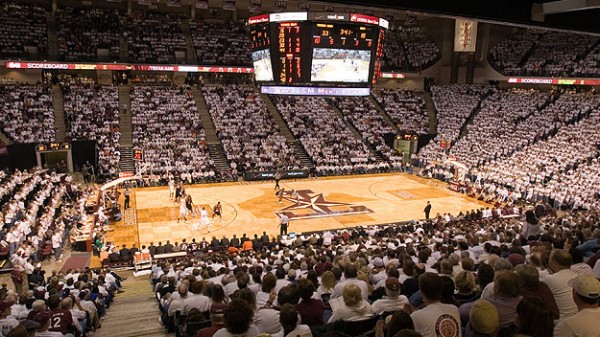Posted by rtmsf on March 17th, 2011

Now that the Play-In First Four games are finished, let’s get back to normalcy with the best weekend of the year beginning this afternoon. Sixteen games, eight sites, four television channels, and several million brackets busted by roughly 3:30 PM eastern time.
#5 West Virginia vs. #11 Clemson – East Region Second Round (at Tampa, FL) – 12:15 pm ET on CBS
Expect a low-scoring, gritty and physical opener for Thursday’s NCAA Tournament action, and not just because the tip time is barely after noon and Clemson arrived in Tampa just before the sun came up on Wednesday. Both of these teams pride themselves in their toughness defensively and play extremely hard on every possession. Clemson specializes in limiting opposing offenses inside the arc behind senior forward Jerai Grant prowess in the paint, while West Virginia limits their competition to below 30% shooting from the three-point line. While both Brad Brownell and Bob Huggins have a history of trotting out stalwart defenses, the edge offensively has to side with the Mountaineers. Kevin Jones has been playing his best basketball of the season as of late, posting three double-doubles in his last four outings. Casey Mitchell is a 38% gunner from deep that is tremendous off screens in catch and shoot situations where he barely needs any room to fire. Deniz Kilicli and John Flowers have aided what has turned out to be the sixth best offensive rebounding team in the nation, no surprise coming from a Huggins-coached squad. Clemson is merely middle of the pack in Division I in allowing offensive rebounds, so the Mountaineer frontline may be able to churn out extra possessions for their perimeter weapons throughout this game. Limiting Grant is certainly a challenge, but the WV frontline should be up to the task. Combine tired legs with Mitchell feasting on a perimeter defense that just surrendered 12 threes to UAB and the edge in this 5/12 matchup has to side with the Mountaineers.
The RTC Certified Pick: West Virginia.
#8 Butler vs. #9 Old Dominion – Southeast Region Second Round (at Washington, D.C.) – 12:40 pm ET on truTV.
Both teams have won their past nine games en route to conference tournament championships. Defense has been the key for each club during their winning streaks with Butler giving up 58 PPG and ODU at 57.7 PPG against over their last nine games. Old Dominion is one of the best rebounding teams in the nation and that is where they have to take advantage of the Bulldogs. This game will be played almost exclusively in the half court with both teams preferring a slower pace. Butler ranks #11 in defensive rebounding percentage but the Monarchs are the best offensive rebounding team in the land. Blaine Taylor’s team must win this battle and protect the basketball in order to advance. They struggle at times with turnovers and lots of giveaways will negate their expected edge on the glass. Look for the Monarchs to work inside utilizing star big man Frank Hassell as well as Keyon Carter and Kent Bazemore. Butler allows 48.7% FG inside the arc and that could hurt them against the frontcourt-oriented Monarchs. Butler shoots almost 21 threes per game behind Shelvin Mack, Zach Hahn and even Matt Howard (44%). Add in the recent play of Shawn Vanzant and you have a team playing as well as they have all year. ODU is very poor against the three, their biggest vulnerability. Bazemore is a terrific defender and needs to come up big on that end against the Bulldog guards. Both teams are experienced and obviously did well in last year’s tournament so they won’t be intimidated by the big stage. While the focus will be on Howard vs. Hassell in the post, this game could be determined by guard play.
The RTC Certified Pick: Butler.
#4 Louisville vs. #13 Morehead State – Southwest Region Second Round (at Denver, CO) – 1:40 pm ET on TBS.
We’re quite sure that Louisville head coach Rick Pitino could only shake his head in disgust when he saw his team’s opening matchup on Thursday. An in-state mid-major whose greatest strength — a dominant glass-eater by the name of Kenneth Faried — bears stark contrast with his Cards’ greatest weakness, interior play. Over the years, Pitino has mastered the art of using team defensive principles to stymie players like Faried by throwing two and three bodies at him everywhere on the floor. The Cards will need to again, because Faried’s nonstop motor and Rodman-esque knack for finding the ball is the best in the nation (he corrals 20% of offensive rebounds and 31% of defensive rebounds while he’s on the floor), something his players know all too well after facing Morehead State (and Faried) in the same round two seasons ago (Faried went for 14/11 in a 20-point loss). He’s gotten better, and so has his team. The good news for Pitino is that MSU is often sloppy with the ball, committing nearly fifteen turnovers a game, and the Eagles don’t defend the three very well (36.9%), which will allow ample opportunities for the Louisville shooters to get good looks from deep. Two seasons ago a stronger Louisville team went into halftime only up two points on a weaker Morehead State team; expect a similar situation this year, as the relative strengths and weaknesses offset each other. Ultimately, the Cards will find enough points through hustle and desire to fend off the school located two hours east, but we’ll forgive Pitino if he lambastes the committee for giving him this dangerous opponent for the second time in three years.
The RTC Certified Pick: Louisville.
#7 Temple vs. #10 Penn State – West Region Second Round (at Tucson, AZ) – 2:10 pm ET on TNT.
While the Owls are 25-7 and the higher seed here, this is not a team that is at full strength. They have played their last eight games without center Michael Eric, who will not return this year, and the last seven without swingman Scootie Randall, who is holding out hope that he will be able to go Thursday. The Nittany Lions, meanwhile, are at full strength, but their full strength means that their five starters are ready to play a whole lot of minutes, with only sporadic contributions from the bench, which averages less than eight total points per game. And given the pace at which Penn State plays (their games average just 60 possessions, in the bottom two percent of the nation), a pace which Temple will have little objection to, we’ll have a low-scoring, limited possession, defensive battle that will likely come down to seeing which of the two teams makes the most plays in the final few minutes. Because of that, the Lions may have the edge. Not only do they have four seniors amongst their five main players, but Talor Battle is an explosive scorer given the limited number of possessions he works with. And, among their five man rotation, only Andrew Jones is a poor free throw shooter. For Temple to counteract the experience of the Lions, they’ll need to get plenty of inside production from physical freak Lavoy Allen, while perimeter players like Ramone Moore, Khalif Wyatt and point guard Juan Fernandez will have to take advantage of a PSU defense that likes to pack it in and force their opponents to beat them with their jump shot. Unfortunately for the Owls, even if Randall does make it back for this game, their most efficient offensive player does not figure to have his legs back, and Temple may come up a bit short.
The RTC Certified Pick: Penn State
Read the rest of this entry »
| 2011 ncaa tournament, game analysis
| Tagged: belmont, bucknell, butler, byu, cincinnati, clemson, connecticut, florida, gonzaga, kansas st, kentucky, louisville, michigan st, missouri, morehead st, ncaa tournament, northern colorado, old dominion, penn st, pittsburgh, princeton, richmond, san diego st, st johns, temple, ucla, ucsb, unc-asheville, utah st, vanderbilt, west virginia, wisconsin, wofford
Share this story


















































